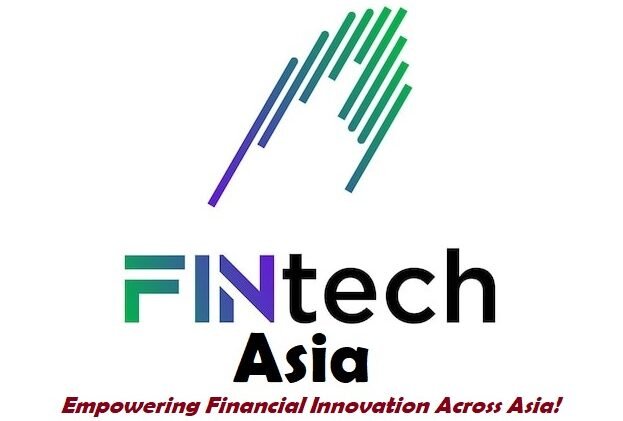FintechAsia Ftasieconomy Tech Updates: A Comprehensive Overview
Introduction
The fintech sector has been one of the most dynamic and rapidly evolving fields in recent years. As financial technology continues to advance, regions around the world are witnessing significant changes in how financial services are delivered and consumed. Among these regions, Asia stands out as a hub of innovation and technological progress in the fintech space. This article delves into the latest tech updates and trends emerging from FintechAsia, focusing on the Ftasieconomy sector.
Understanding FintechAsia and Ftasieconomy
FintechAsia refers to the burgeoning financial technology landscape in Asia, encompassing a range of innovations from digital payments to blockchain technology. Ftasieconomy, a term coined to represent the specific economic and technological ecosystem within FintechAsia, includes the latest developments, investments, and trends impacting the fintech industry in this region.
Recent Technological Advances in FintechAsia
1. Blockchain Integration
Blockchain technology continues to be a game-changer in the fintech sector. In FintechAsia, blockchain is being integrated into various financial services to enhance transparency, security, and efficiency. Key updates include:
- Cross-Border Payments: Blockchain solutions are streamlining cross-border transactions, reducing costs and processing times. Companies like Ripple and Stellar are at the forefront, offering faster and more secure payment methods.
- Smart Contracts: The use of smart contracts is gaining traction for automating complex financial agreements and reducing the need for intermediaries. This innovation is particularly impactful in areas such as trade finance and insurance.
2. Artificial Intelligence and Machine Learning
AI and machine learning are revolutionizing financial services by enabling more personalized and efficient solutions. Recent updates in FintechAsia include:
- Fraud Detection: Advanced AI algorithms are being employed to detect and prevent fraudulent activities. These systems analyze transaction patterns in real-time to identify suspicious behavior and reduce financial crime.
- Customer Service: Chatbots and virtual assistants powered by AI are enhancing customer support, offering real-time assistance, and handling routine inquiries, thus improving user experience.
3. Regulatory Technology (RegTech)
RegTech is emerging as a crucial component of the fintech landscape, helping companies navigate complex regulatory environments. Key developments include:
- Compliance Automation: RegTech solutions are automating compliance processes, making it easier for companies to adhere to regulations and reduce the risk of non-compliance.
- Risk Management: Advanced tools are being used to assess and manage financial risks, providing better insights and more effective risk mitigation strategies.
Key Trends in Ftasieconomy
1. Rise of Digital Banking
Digital banks, or neobanks, are becoming increasingly popular in Asia, driven by the demand for convenient and accessible financial services. These banks operate entirely online and offer a range of services without the need for physical branches. Recent trends include:
- Increased Adoption: More consumers are embracing digital banking solutions due to their ease of use, lower fees, and innovative features.
- Partnerships and Collaborations: Traditional banks are partnering with fintech startups to enhance their digital offerings and stay competitive in the evolving market.
2. Expansion of Financial Inclusion
Financial inclusion remains a major focus in Ftasieconomy, with efforts being made to bring banking services to underserved populations. Key initiatives include:
- Microfinance Solutions: Innovative microfinance platforms are providing small loans and financial services to individuals and businesses in underserved areas.
- Mobile Banking: Mobile banking apps are being used to reach remote and rural populations, offering them access to essential financial services.
3. Growth of Cryptocurrency and Digital Assets
Cryptocurrency and digital assets are gaining traction in FintechAsia, with increasing interest from investors and consumers alike. Recent updates include:
- Regulatory Developments: Governments and regulatory bodies are implementing frameworks to govern cryptocurrency transactions and protect investors.
- Adoption by Institutions: More financial institutions are exploring the potential of digital assets, including investment firms and payment processors integrating cryptocurrency solutions.
Future Outlook
The future of Ftasieconomy in FintechAsia looks promising, with continued advancements in technology and increasing investment in fintech innovations. Key areas to watch include:
- Emerging Technologies: The integration of emerging technologies such as quantum computing and the Internet of Things (IoT) is expected to further transform the fintech landscape.
- Sustainability: There is a growing emphasis on sustainable and socially responsible fintech solutions, aligning financial technology with broader environmental and social goals.
Conclusion
FintechAsia is at the forefront of technological innovation in the financial sector, with the Ftasieconomy playing a significant role in shaping the future of fintech. From blockchain and AI to digital banking and financial inclusion, the latest tech updates highlight the dynamic nature of this industry. As the sector continues to evolve, staying informed about these developments is crucial for understanding the future of financial technology in Asia.



